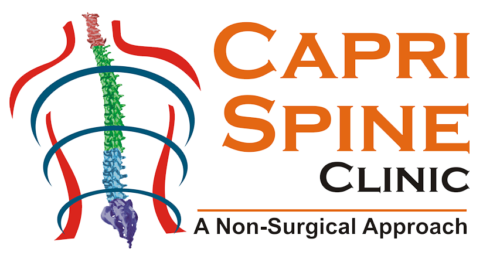Pre and Post Pregnancy Back Pain
Best Back Pain Treatment Without Surgery at Capri Spine
Pregnancy Related
Back Pain
During the pregnancy period due to the added weight of the baby, the ladies tend to have an increased lordosis which leads to facet joint stress and may result in back pain in many cases
Many of the physical changes that can cause low back pain during pregnancy may contribute to an achy back now, especially if you’ve given birth very recently. During pregnancy, your expanding uterus stretches and weakens your abdominal muscles and alters your posture, putting strain on your back. Plus, extra weight means more work for your muscles and increased stress on your joints.
What’s more, hormonal changes in pregnancy can loosen the joints and the ligaments that attach your pelvic bones to your spine, which can make you feel less stable and cause pain when you walk, stand, sit for long periods, roll over in bed, get out of a low chair or the tub, bend, or lift things. It’s common to have some back pain after giving birth. It usually resolves within a few months, though some women will continue to have pain for much longer
Women who had back pain before or during pregnancy are more likely to have persistent back pain after pregnancy, particularly if their pain was severe or began relatively early in pregnancy. Being overweight increases the risk too.
Begin a gradual exercise program: While you may not be eager to be up and about if your back hurts, moving around may be just what your body needs. Exercises to strengthen your abdominal muscles and increase flexibility may be helpful too.
- Choose a gentle form of exercise, such as walking. Walking is safe to start almost immediately after either a vaginal birth or a cesarean section. Take it slowly and keep walks short in the first few weeks. (Swimming, which helps strengthen your muscles without putting undue stress on your joints, is another good option later on.) Do gentle stretching exercises or yoga. Avoid overstretching or extreme positions.
- Listen to your body. If a particular position or activity causes you discomfort, stop.
- Be aware of positioning and proper body mechanics. Pay attention to your posture and stand up straight.
- Sit up straight, too. Think about your posture when feeding your baby, whether you’re nursing or bottle-feeding. If you have low back pain, try using a footstool to keep your feet slightly raised off the floor. Choose a comfortable chair with armrests, and use lots of pillows to give extra support to your back and arms.
- Learn how to position yourself properly while nursing, and always bring your baby to your breast, rather than the other way around. Also try different breastfeeding positions. If you have tense shoulders and upper back pain, the side-lying position may be most comfortable.
- Always bend from your knees and lift objects and children from a crouching position to minimize the stress on your back. Let someone else lift heavy objects – this isn’t the time to risk throwing your back out. (If you’ve had a c-section, you shouldn’t be lifting anything heavier than your baby for at least eight weeks.)

